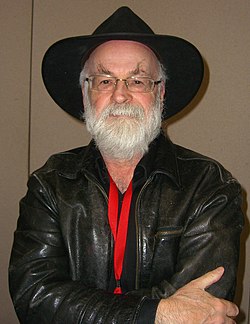Origin and development
The "lie-to-children" concept was first discussed by scientist Jack Cohen and mathematician Ian Stewart in the 1994 book The Collapse of Chaos: Discovering Simplicity in a Complex World as myths—a means of ensuring that accumulated cultural lore is passed on to future generations in a way that was sufficient but not completely true. [1] [2] [3]
They further elaborated upon their views in Figments of Reality: The Evolution of the Curious Mind , stating that the lie-to-children concept reflected the difficulty inherent in reducing complex concepts during the education process. [4] [5] Stewart and Cohen noted that "[a]ny description suitable for human minds to grasp must be some type of lie-to-children", and that the truth is "much too complicated for our limited minds". [4]
The concept gained greater exposure when they co-authored The Science of Discworld with author Terry Pratchett. In this book, the authors acknowledge that some people might dispute the applicability of the term lie, while defending it on the grounds that "it is for the best possible reasons, but it is still a lie". [6] In an interview promoting the book, Pratchett cautioned: "Most of us need just 'enough' knowledge of the sciences, and it's delivered to us in metaphors and analogies that bite us in the bum if we think they're the same as the truth." [7] [8]

